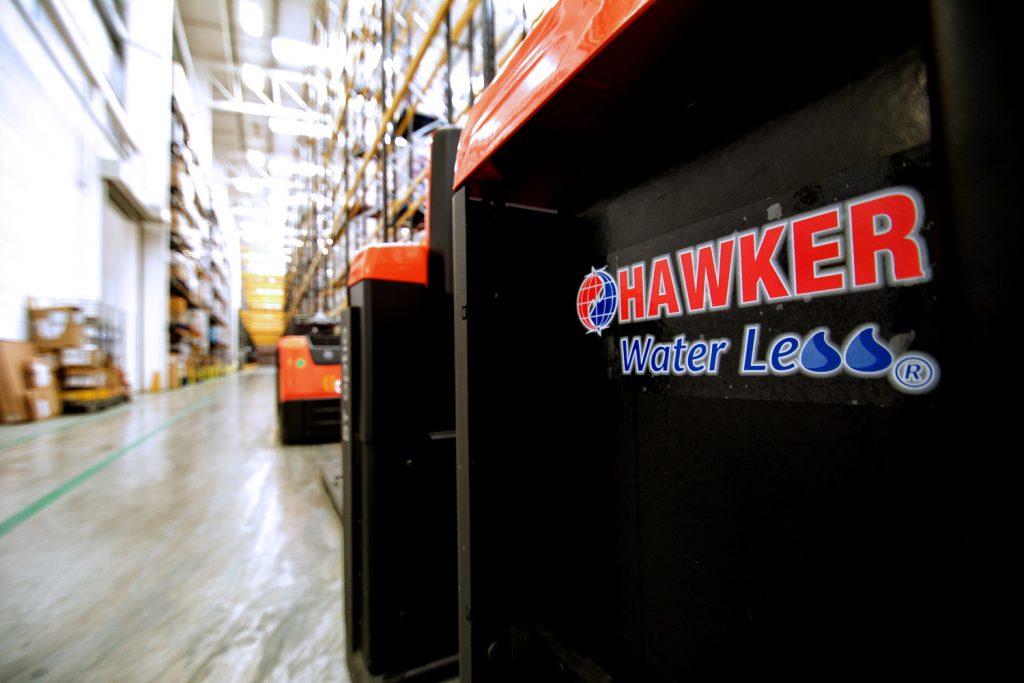EnerSys Water Less Battery Range Extension Slashes Topping-Up Costs
25th August 2020

EnerSys has extended its Hawker Water Less battery range to reduce downtime in time-critical logistics applications involving pallet trucks. Material-handling industrial trucks in the British Standard (BS) Class 3 can now benefit from longer water topping-up intervals and up to 75% lower maintenance costs.
A proven technology for larger industrial trucks, the Water Less battery range has now been updated to achieve greater power density, meeting the requirements of smaller vehicles in BS Class 3. This includes hand-controlled forklifts such as electric pallet jacks, stackers and tow tractors, which constitute the largest category of industrial trucks globally.
The capacity of Water Less batteries has been increased, with 60 Ah and 70 Ah plates upgraded to 65 Ah and 75 Ah respectively while maintaining the same cell height. Additionally, the cell height of the 100 Ah plates has been reduced from 669 mm to 633 mm.
“The Water Less battery range brings significant benefits to industrial trucks, namely reduced downtime and costs due to less frequent water topping up,” comments Mattia Bianconi – Application Manager EMEA Motive Power . He continued: “Logistics and warehousing operators using electric pallet trucks can now benefit from the same time- and cost-saving features without having to compromise on battery capacity.”
Less frequent, faster topping up
Water Less batteries achieve high levels of efficiency thanks to its PzM cell design technology and advanced components. This battery design ultimately reduces the need to top up, leading to longer intervals of up to 4, 8 or even 13 (depending on the charger deployed and operating conditions) compared to PzS standard flooded batteries.
Featuring a Low Electrolyte Level Sensor as a standard feature, the Water Less battery range also enables users to see at a glance when batteries need topping up, preventing damage, premature failure, and associated downtime. In addition, the AquamaticTM water refill system means that all cells can be topped up from one central point through an integrated system, reducing topping-up times.
Shorter recharge times, longer battery life and greater flexibility
The Water Less battery can be fitted with an electrolyte circulation system, which is designed to
prevent electrolyte stratification. This technology helps optimise battery charging, reducing recharge times. It also helps keep the battery cooler, maximising battery service life even in heavy duty applications.
Another key feature of the Water Less battery range is that it is compatible with both 50 Hz and HF chargers, meaning greater flexibility for users. Hawker Modular chargers from EnerSys are able to adapt automatically to the battery’s capacity, voltage, and depth of discharge.
Hawker Water Less 20 package
The Water Less battery can be supplied indivually or as part of the comprehensive Hawker Water Less 20 package, including battery, Wi-iQ battery monitoring device and Hawker Modular charger. The Wi-iQ battery monitoring device by EnerSys monitors the charge status and operating conditions of the battery while storing critical, meaningful data on service life. Users can access this information easily, at any time, by generating fleet management reports. The Wi-iQ battery monitoring device communicates with Hawker Life iQ™ Modular chargers directly, enabling battery temperature control, which makes it compatible with cold storage environments. Thanks to all these features, topping-up intervals can be extended further to 20 weeks.
The Water Less battery range is suitable for a variety of material-handling applications in logistics and warehousing, from low duty (single shift with light operation, up to 60% discharge and temperatures up to 30°C), through to normal duty (single shift, up to 80% discharge and temperatures up to 30°C) and heavy duty (single shift with discharges of 80% and high discharge currents or multi-shift operations with high ambient temperature).

